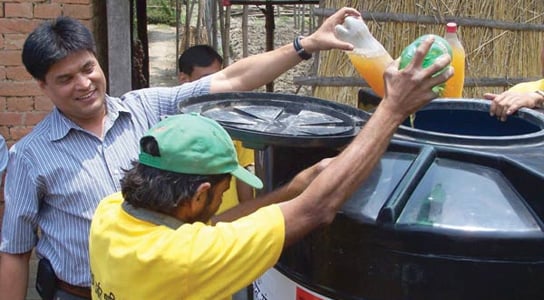
Last year, in Sotang, Nepal, the Dzi Foundation helped build over 1,000 toilets for the nearly 6,500 residents of the village. The villagers were given the option of using a regular squatting pan or a dual-hole pan, which allowed for the collection of urine to be used as a fertilizer.
Urine is mostly water, mixed in with nutrients that plants can quickly and easily absorb. It can be compared to the nitrogen-rich fertilizer urea, except that it’s liquid and free. When urine is separated at the source, resources, which would otherwise be used to treat waste through expensive sewage treatment systems, are saved.
The farmers using urine as a fertilizer can also offset their carbon footprint, reducing the need for phosphorous. In 2006, the WHO published four volumes of guidelines on the safe usage of wastewater. Urine poses negligible health risks, except in the case of contamination from fecal pathogens. To prevent these pathogens from entering food, WHO proposes a series of behavioral barriers – from separation of urine at the source to applying urine only on soils and not on leaves, prioritizing crops that will be cooked and sanitary handling in the kitchen.
Traces of medicines and hormones that leak into the environment are a concern, but it isn’t seen as a big problem. By applying pee on soil, as opposed to circulating it through wastewater treatment systems, the risk to the environment is less because there is more degradation in the soil.
There is a concern that continuous exposure of urine will make the soil turn alkaline, making it harder for plants to get to nutrients. However, this phenomenon hasn’t been observed in the field.
The biggest challenge in urban settings is collecting the urine and transporting it to farmer’s fields. The average family produces 84 liters of urine a week, and this can quickly add up to a huge volume as the months pass. Researchers are looking into ways of solidifying the phosphorous available in urine, or using urine to fortify compost.
In 2012, in Sotang, 65% of the household chose urine-separating toilets, compared to 37% in 2011.